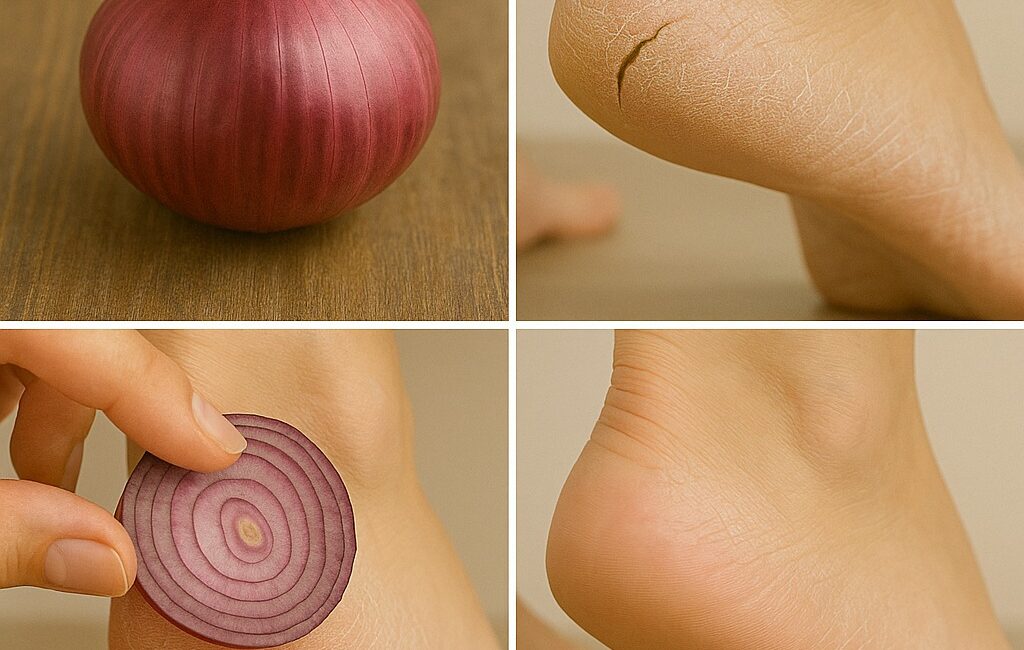Introduction
Cracked heels — also known as heel fissures — are a common foot problem that affects millions of people worldwide. What may start as minor dryness can escalate into painful, unsightly cracks that interfere with walking and daily activities. The good news is that with the right care and a powerful natural remedy, you can heal cracked heels permanently, restoring your feet to a soft, smooth, and healthy condition.
This article will delve deeply into the nature of cracked heels, their causes, prevention, and an all-natural, easy-to-implement home remedy using castor oil — a centuries-old botanical treasure known for its healing and moisturizing properties. By understanding why cracked heels occur and following a consistent treatment protocol, you can transform rough, painful feet into a source of confidence and comfort.
Understanding Cracked Heels: Anatomy and Causes
What Are Cracked Heels?
The heel skin is naturally thicker than the skin on most parts of the body because it bears much of the body’s weight when standing and walking. It is covered with a thick layer called the stratum corneum, which acts as a barrier protecting against friction, pressure, and environmental damage.
When the skin becomes too dry and loses its elasticity, this thick layer can harden and split under pressure, forming fissures or cracks. These cracks can be shallow and superficial or deep and painful, sometimes bleeding and vulnerable to infection.
Common Causes of Cracked Heels
Several factors can contribute to cracked heels:
- Dry Skin (Xerosis): The most common cause. The skin lacks moisture and becomes rough and brittle.
- Excess Pressure: Standing for long hours, especially on hard floors or wearing ill-fitting shoes, increases pressure on the heel.
- Obesity: Additional body weight puts extra strain on the heels.
- Aging: As we age, our skin loses collagen and elastin, becoming thinner and less supple.
- Cold Weather: Dry, cold climates sap moisture from the skin.
- Medical Conditions: Diabetes, eczema, psoriasis, thyroid problems, and athlete’s foot can worsen heel cracking.
- Improper Footwear: Open-back shoes or sandals expose the heel to air and environmental stress.
- Lack of Proper Foot Care: Neglecting regular moisturizing and exfoliation.
Why Cracked Heels Are More Than a Cosmetic Problem
Cracked heels are often dismissed as a minor nuisance, but they can have serious implications:
- Pain and Discomfort: Deep fissures cause pain while walking or standing.
- Risk of Infection: Open cracks can allow bacteria or fungi to enter, causing cellulitis or fungal infections.
- Impaired Mobility: Severe cracks might discourage walking, affecting overall health.
- Cosmetic Concerns: Rough, scaly heels impact self-confidence, especially when wearing open footwear.
Conventional Treatments and Their Limitations
Many over-the-counter foot creams promise relief, but often they provide only temporary hydration without addressing the root cause. Chemical-based treatments may contain ingredients that irritate sensitive skin or offer only superficial repair.
Pumice stones and scrubbing tools are helpful for removing dead skin but can worsen fissures if overused or applied too harshly. Similarly, synthetic occlusive agents (petroleum jelly, mineral oils) seal moisture but lack regenerative properties.
What’s needed is a natural, potent, and safe remedy that deeply nourishes, heals, and restores the skin’s elasticity.
Why Castor Oil Is the Magical Solution for Cracked Heels
The Botanical Wonder: What Is Castor Oil?
Castor oil is a pale yellow oil obtained by cold-pressing the seeds of the Ricinus communis plant. For thousands of years, it has been valued in traditional medicine and cosmetics for its unique healing and moisturizing properties.
Key Properties of Castor Oil
- Rich in Ricinoleic Acid: About 90% of castor oil is ricinoleic acid, a fatty acid with potent anti-inflammatory, antimicrobial, and moisturizing effects.
- Excellent Emollient: It penetrates deeply into the skin, softening and lubricating rough areas.
- Antimicrobial Action: Helps prevent secondary infections in cracked skin.
- Stimulates Collagen Production: Enhances skin regeneration and elasticity.
- Promotes Wound Healing: Helps close fissures and repair damaged tissue.
- Hydrophilic Properties: Draws moisture into the skin, providing long-lasting hydration.
Why Cold-Pressed, Pure Castor Oil?
Cold-pressed castor oil retains the maximum concentration of nutrients and therapeutic compounds, as it is extracted without heat or chemicals that degrade quality.
How to Use Castor Oil to Permanently Remove Cracked Heels
Step 1: Gather Supplies
- Pure, cold-pressed castor oil (available online or health stores)
- Clean cotton balls or pads
- Bandage or medical tape
- A basin for warm water soak
- Mild soap
- Exfoliating tool (optional: pumice stone or foot file)
- Moisturizing socks or cotton socks
Step 2: Prepare Your Feet
Before applying castor oil, it’s essential to prepare your feet to maximize absorption and effectiveness.
- Soak Your Feet:
Fill a basin with warm water (not hot) and soak your feet for 15-20 minutes to soften the hardened skin. - Cleanse Gently:
Use a mild soap to wash away dirt and bacteria. - Exfoliate:
Using a pumice stone or foot file, gently remove dead skin layers from the heels. Do not overdo it; the goal is to thin the hardened skin without causing injury. - Dry Your Feet:
Pat dry with a clean towel.
Step 3: Apply Castor Oil
- Soak Cotton Ball:
Dip a small piece of cotton or cotton ball into castor oil until fully saturated. - Apply to Heels:
Place the cotton ball on the cracked area of the heel. - Secure:
Wrap the cotton ball with a bandage or medical tape to keep it in place. - Leave Overnight:
For best results, leave the castor oil on overnight to allow deep penetration.
Step 4: Repeat the Process Consistently
Healing cracked heels is not instant. Consistency is key. Repeat the application nightly for several weeks. Over time, you will notice:
- Softening of hardened skin
- Reduced depth and size of cracks
- Improved skin texture and elasticity
- Complete healing and restoration of smooth, healthy heels
Click page 2 for more




